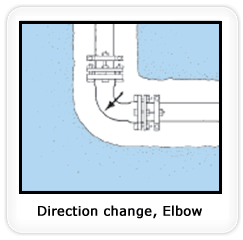Thrust Blocks
Thrust blocking prevents pipe movement when a pressure system is activated and pressurized thrust blocking is required at all points of change of direction in the pipe line. Most blocking is done where a fitting valve or hydrant is installed. There may be times when side blocking is necessary because of curvature occurring without the use of fittings.
Usually good compacted backfill will provide the necessary anchor for side thrust. Concrete blocking is the most commonly recommended method of blocking. Concrete is placed directly on the fitting against the line of thrust. The concrete must also pour against undisturbed earth.
The size of the blocking will vary with the size of pipe working pressure exerted type of fitting degree of flow direction change and the soil conditions. PVC pipe is flexible and may pulsate under pressure variations. This does not harm the pipe or that part which is enclosed in concrete. It may cause wear at the interface of the concrete block and the backfill. For this reason pipe and fittings should be wrapped with a one mill or heavier plastic sheeting prior to being embedded in concrete to prevent any possible damage.






